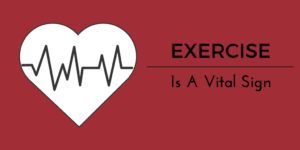
Here we are – already several weeks into a new year. With the flurry of the winter holidays, the end of the fiscal year, and the election season behind us, perhaps we’re all starting to focus on what we hope to accomplish in 2017. The beginning of a new year tends to inspire us to make resolutions. Perhaps you’ve made some of your own?
According to Statistic Brain, the Top 5 New Year’s Resolutions made across the country for 2017 were as follows: 1) Lose Weight / Eat Healthier, 2) Life / Self Improvements, 3) Better Financial Decisions, 4) Quit Smoking, & 5) Do More Exciting Things. Over 20% of us chose Lose Weight / Eat Healthier as a top priority. A bit further down this list, in 7th place, was the resolve to Work Out More Often – reported by 5% of those surveyed.
Now, aspiring to make good choices with regard to eating is certainly an important, admirable goal. Presumably, the intent behind this resolve would be to improve health (although looking better in a swim suit come summertime is probably also part of the plan). However, just as important and admirable, we at Symmetry would suggest, would be the aspiration to make sure to exercise sufficiently.
As explained in this article published recently in US News, the idea of treating exercise as a Vital Sign – alongside heart rate, temperature, respiratory rate, and blood pressure – is starting to take hold in the medical community. We know that being sedentary increases the risk of chronic diseases, such as diabetes, heart disease, and even cancer. We also know that exercise can have a positive impact on the effects of disease, the quality of sleep and mood, and the ability to successfully participate in life activities – not to mention on the shape of the human body, in a swim suit, or really any other garb. Yet it has not historically been commonplace for medical providers to ask their patients about their levels of exercise, or to help patients develop and implement a plan for activity and then to check up on their progress from time to time.
According to the Centers for Disease Control and Prevention, less than 50% of American adults (> age 18) get enough aerobic physical activity. And only 20% meet current guidelines for both aerobic activity and muscle strengthening activity. It is fairly universally understood that aerobic activity is good for health. Less common is the awareness that maintaining adequate musculoskeletal strength is also important. One reason for this would be that strength training promotes good bone density – decreasing the risk of fractures and osteoporosis. Strength training can also improve a body’s ability to manage glucose, lowering the risks and/or impact of diabetes or other blood sugar issues. There is also a strong (no pun intended) correlation between strength and the ability to live independently. This is perhaps particularly evident in the elderly population, where the abilities to stand up from a chair or to climb the steps from the driveway to the front door are critical to maintaining the capacity to live alone. However, clearly each of us relies daily on our capacity to accomplish this sort of task, in addition to doing things such as carry groceries, open jars, pick things up from the floor, and complete infinite other daily life skills. We just don’t pay any mind to this kind of thing unless or until we find ourselves in some way incapacitated by injury or illness.
According to the US Department of Health and Human Services, it is recommended that American Adults get at least 150 minutes of moderate-intensity aerobic activity each week – preferably in intervals of at least 10 minutes at a time. Activities that promote strength are recommended at least two times each week. Balance and agility training, as well as flexibility training are also recommended
So why not make a pledge to yourself to make physical activity a top priority in 2017 and beyond? What are your perceived barriers? Why not let your Physical Therapist help you to assess your Exercise Vital Sign? Symmetry’s proposal to the community is that we can help you to overcome limitations to anyone’s capacity to meet recommended activity goals. We can assist you in eliminating pain and in establishing better movement patterns that will let your bones, joints, and muscles comfortably participate in activity. We can provide you with individualized prescriptions for aerobic conditioning and strength training. We can give you intermittent guidance to allow you to progress and modify your individual activities. We can measure and remeasure, as well as offer feedback and encouragement – all to ensure that you are able to make headway towards your personal goals.
A note on logistics: evaluation of your Exercise Vital Sign can be accomplished without a prescription. An evaluation visit can even be billed to your insurance – though subject to your plan’s particular specifics regarding patient responsibility (copayment, deductible, etc.). If during evaluation it is determined that additional visits for physical therapy treatment would help to enable the successful initiation of your prescribed exercise plan, then a prescription would need to be obtained. We would be happy to help to facilitate the acquisition of a prescription for ongoing care when needed.
Symmetry is committed to working collaboratively with other healthcare providers to further the process of integrating the measurement of Exercise as a Vital Sign into standard medical practice. A healthy, fit community is of benefit to us all!
